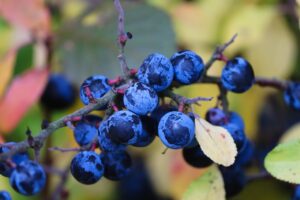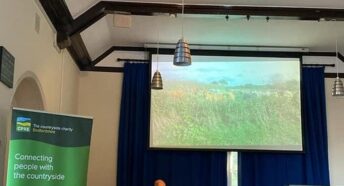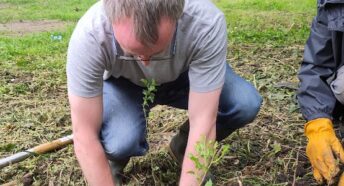Hedgerow fact file: wildlife heroes
Planting is now well underway in the CPRE Bedfordshire Hedgerow Heroes project. A variety of hedgerow species are being used, all bringing benefits for local wildlife.
Hedgerow trees and shrubs provide food, shelter and nesting places for birds, small mammals and insects throughout the year. Hawthorn makes up around 70% of the plants that we are using in the 2024/5 planting season, the others are guelder rose, dog rose, spindle, wayfaring tree and blackthorn.
Find out more about some of the wildlife each species attracts below.
Hawthorn
Latin name: Crataegus monogyna
Birds: the thick, thorny stems make excellent nesting sites for birds, while the antioxidant rich haws provide winter food for blackbirds, thrushes, fieldfares and waxwings. Insects shelter in the crevices of the bark, providing another source of food for birds.
Insects: hawthorn provides food for many varieties of moth caterpillars, as well as providing nectar and pollen for bees and other pollinating insects.
Mammals: the haws are eaten by a range of small mammals and the flowers are enjoyed by dormice in particular.

Guelder Rose
Latin name: Viburnum opulus
Birds: many birds, including bullfinch, waxwings and the mistle thrush eat the red berries.
Insects: the flowers are especially attractive to hoverflies as well as a range of other insects including the Marmalade Hoverfly.

Dog Rose
Latin name: Rosa canina
Birds: species such as blackbirds, waxwings, redwings and bullfinches feed on the hips.
Insects: Dog rose flowers are an important nectar source for insects. Larvae, including the Common Emerald and Vapourer Moth feed on the leaves.
Mammals: Small mammals like bank voles and wood mice enjoy the hips.

Spindle (or Spindleberry)
Latin name: Euonymus europaeus
Birds: House sparrows are one of a number of birds attracted to spindle.
Insects: Many insects, including bees and hoverflies are attracted to the flowers. The flowers are pollinated by St Mark’s Fly. The leaves are eaten by caterpillars of moths, as well as the holly blue butterfly. The leaves also attract aphids and their predators, including hoverflies, ladybirds and lacewings.

Wayfaring tree
Latin name: Viburnum lantana
Birds: a variety of bird species including blackbirds, fieldfares and waxwings eat the berries.
Insects: bees, butterflies and hoverflies visit the flowers. The larvae of several moth species will feed on the leaves.
Mammals: the dormouse and wood mice will eat the berries.

Blackthorn
Latin name: Prunus spinosa
Birds: Birds nest among the dense, thorny thickets, eat caterpillars and other insects from the leaves, and feast on the sloes in autumn.
Insects: the pollen is a good food source for early insects, and the larvae of a variety of moths and butterflies, including the Emperor Moth, feed on the leaves. It is also used by the black and brown hairstreak butterflies.








